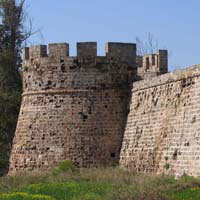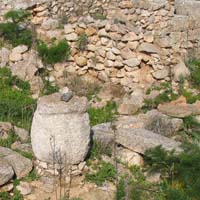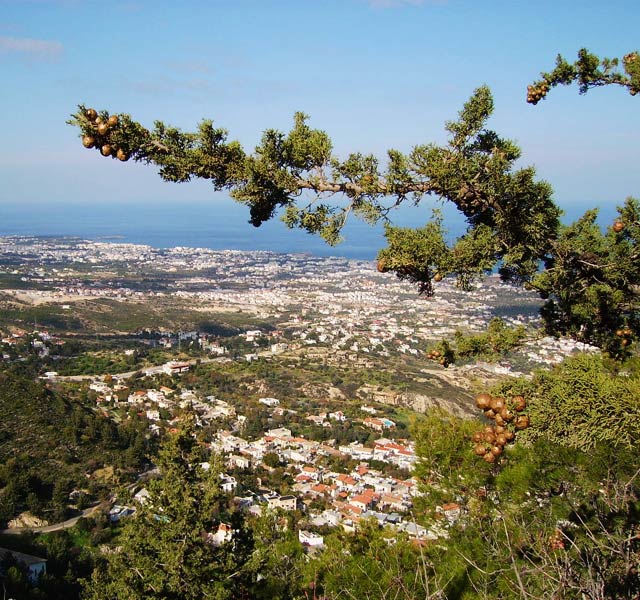Some have been largely neglected since partition but nevertheless are of huge importance. The Greco Romano site of Salamis is one such. This is undoubtedly the most fascinating and historically the most important city site on the whole of the island. During the 1950’s right up to 1974 the excavations of Salamis were continuous and a great deal of this huge complex was revealed. Since the island was partitioned, little work has been carried out, and nature has once again taken over covering the site with sorrel, giant fennel and crown daisy. This return to the wild only serves to make this ancient city even more beautiful. There can be few places anywhere that are more exquisite than Salamis clothed in a garment of gold in the spring season. Founded as a small settlement some time shortly after the Trojan wars this township slowly expanded as trade developed and by the 8 th C BC Salamis had become the most important commercial centre. The island was governed by Alexander the Great and after his death was contr trolled by the Hellenistic Ptolemy dynasty of Egypt, with each of the city states, of which Salamis was only one, being ruled by their own kings. The last king of Salamis, Nicocreon rebelled against the armies of Ptolemy, was vanquished and committed suicide in 295 BC. Turbulent times accompanied financial success and the Romans took over the island in 58 BC. They brought with them a period of peace and stability and an increase in trade. Salamis developed into a vast city that displayed in all its buildings, both private and municipal, that it was a place of great wealth and importance. The main parts of this complex, easily visited even during the heat of summer, are the partly rebuilt theatre; the excavated bath-houses; a long stretch of paved road, with ancillary buildings; the gymnasium, and another collection of bath-houses that contain a few fragmentary mosaics and visible hypocaust system. A plan of the site will show much more that needs to be visited on foot but is worth the effort if the day is cool. The city suffered much damage from earthquakes and was partially rebuilt twice with broken statues and shattered masonry being recycled into restored buildings. However commercially the city was finished and the Arab raids, plus another earthquake and tidal wave in the 7 th C AD rang the death knell. The inhabitants moved from their broken city and developed the town that is now Famagusta. Barnabas, a native Salamis Jew, converted to Christianity and brought Christian teachings back to Cyprus long before the Emperor Constantine decreed that the Christian faith should be followed throughout the Roman Empire, and it is Barnabas who is the Patron Saint of Cyprus.













